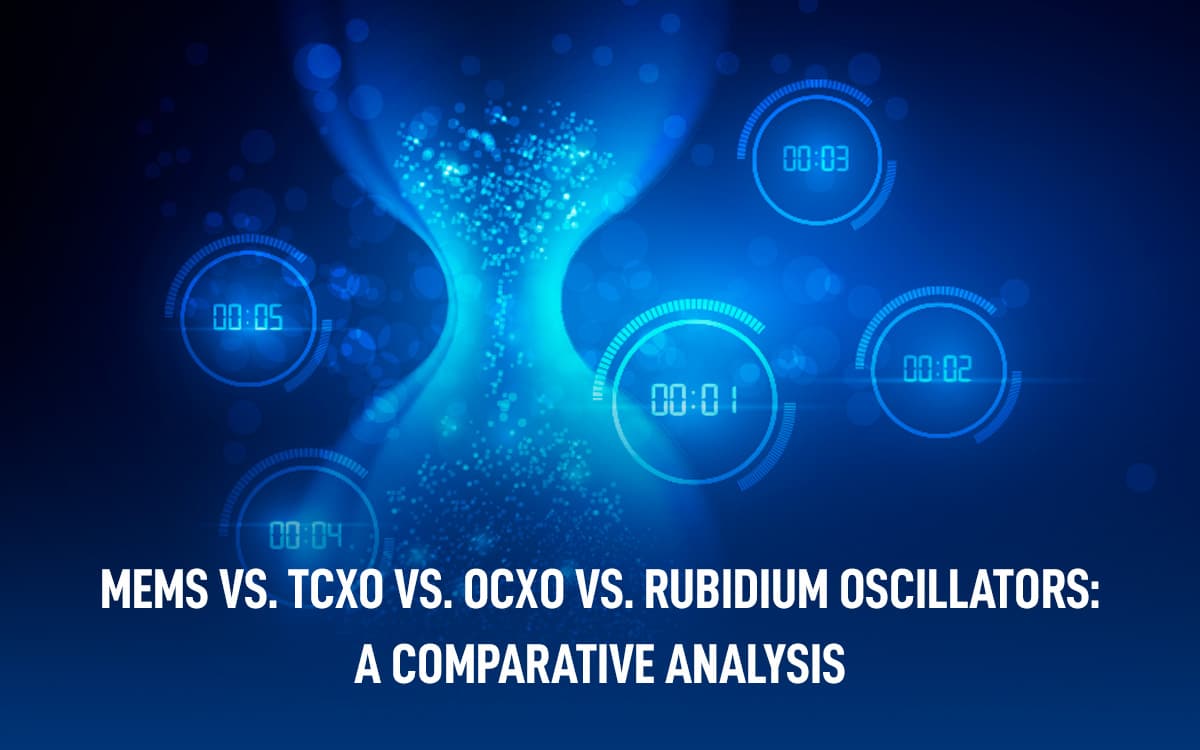
MEMS vs. TCXO vs. OCXO vs. Rubidium Oscillators: A Comparative Analysis
Oscillators are vital components in numerous electronic applications, including clocks, radios, and GPS systems. They generate periodic waveforms, primarily sine waves or square waves, that control the timing and synchronization of circuits. The type of oscillator used depends on the requirements of the application. Let’s compare MEMS, TCXO, OCXO, and Rubidium oscillators in terms of advantages, disadvantages, and trade-offs.
1. MEMS (Micro-electromechanical Systems) Oscillators:
Advantages:
- Size: MEMS oscillators are extremely compact, making them suitable for space-constrained applications.
- Shock and Vibration Resistance: They have superior resistance to mechanical stresses, which makes them ideal for rugged environments.
- Power Consumption: Typically, MEMS oscillators consume less power compared to some other types.
- Fast Start-up Time: They can start-up quickly, which is beneficial in applications that require rapid time-to-first-fix.
Disadvantages:
- Stability: MEMS oscillators may not offer the same long-term stability as some other types.
- Temperature Sensitivity: Their frequency might drift with temperature changes, though this has improved in recent designs.
Trade-offs: Choosing MEMS oscillators might mean sacrificing some stability for size, power consumption, and mechanical robustness.
2. TCXO (Temperature-Compensated Crystal Oscillator):
Advantages:
- Temperature Compensation: TCXOs are designed to compensate for frequency drifts due to temperature changes, offering better stability than basic crystal oscillators.
- Cost-Effective: They provide a good balance between cost and performance.
- Reasonable Stability: While not the most stable, they’re sufficient for many applications.
Disadvantages:
- Power Consumption: TCXOs can consume more power compared to MEMS.
- Size: They are typically larger than MEMS oscillators.
Trade-offs: Opting for TCXO might mean a balance between cost and temperature-compensated performance.
3. OCXO (Oven-Controlled Crystal Oscillator):
Advantages:
- Superior Stability: OCXOs provide the best short-term stability among quartz-based oscillators.
- Temperature Control: They employ an oven to maintain the crystal at a constant temperature, minimizing frequency drift.
Disadvantages:
- Size and Weight: OCXOs are bulkier due to their oven mechanism.
- Power Consumption: The oven requires significant power, leading to higher power consumption.
- Warm-Up Time: They can have a longer start-up time to reach optimal stability.
Trade-offs: Choosing OCXO means prioritizing stability over size, power efficiency, and immediate start-up time.
4. Rubidium Oscillators:
Advantages:
- Top-Tier Stability: Rubidium oscillators are atomic clocks and offer exceptional frequency stability.
- Long-term Accuracy: They maintain accuracy over long periods, making them ideal for precision applications.
Disadvantages:
- Cost: They are among the most expensive oscillators.
- Size: Typically larger and not suitable for compact devices.
- Power Consumption: Can be higher compared to other types.
Trade-offs: Opting for a Rubidium oscillator is typically a decision to prioritize extreme accuracy and long-term stability at the cost of size, power efficiency, and budget.
Conclusion: Each of these oscillators has its niche. MEMS is great for portable and rugged devices, TCXOs for applications needing temperature stability without breaking the bank, OCXOs for top-notch stability where size and power aren’t primary concerns, and Rubidium oscillators for applications where only the best stability will do. The choice ultimately depends on the specific requirements and constraints of the application.


